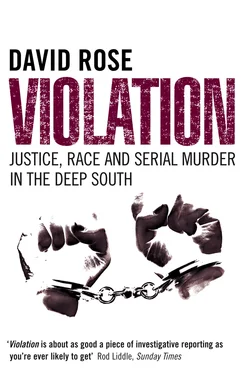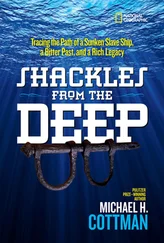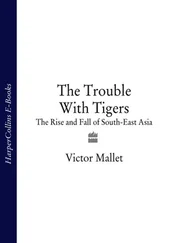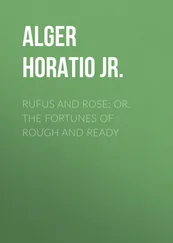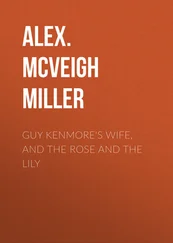If Worsley is indignant about the end of slavery, Sterling Price Gilbert, long a member of Georgia’s Supreme Court and arguably the most distinguished jurist Columbus has produced, is both egocentric and mawkishly sentimental. In his 1946 memoir A Georgia Lawyer , he writes of the liberation of his own family’s property:
The earliest recollection that I have of my home takes me back to the age of about three … Our cook and her son, Anderson, who was the yard boy and who had ‘looked after’ me were leaving. I had a strong attachment, almost love, for Anderson. He had been my bodyguard and my playmate. My heart was filled with sorrow, and I cried because he was leaving me. I went to the road with him and his mother. I can remember standing with feet apart, in the middle of the road, with tears streaming down my face, waving goodbye to my two friends. Every hundred yards or so, they would turn round and wave.
Justice Gilbert does not ask why his father’s chattels, given a choice for the first time in their lives, had elected to leave.
Telfair, Worsley and Gilbert were all writing in the twentieth century, but the Lost Cause legend had emerged much earlier, and Columbus played a direct and significant role in its formation. On 12 March 1866, less than a year after Wilson’s raiders torched the city’s factories, Miss Lizzie Rutherford, her cousin Mrs Chas. J. Williams and their friends in the Soldier’s Aid Society of Columbus began what was to become a totemic institution, Confederate Memorial Day. Mrs Williams, the daughter of a factory and railroad magnate, was married to a soldier who had, as Worsley writes, ‘served bravely in the war’. She composed ‘a beautiful letter’, which she had distributed to women, newspapers and charitable organisations throughout the South. Williams proposed
to set apart a certain day to be observed from the Potomac to the Rio Grande, and be handed down through time as a religious custom throughout the South, to wreath the graves of our martyred dead with flowers … Let every city, town and village join in the pleasant duty. Let all alike be remembered, from the heroes of Manassas to those who expired amid the death throes of our hallowed cause … They died for their country. Whether or not their country had or had not the right to demand that sacrifice is no longer a question for discussion. We leave that for nations to decide in the future. That it was demanded – that they fought nobly, and fell holy sacrifices upon their country’s altar, and are entitled to their country’s gratitude, none will deny.
Here was the core of Lost Cause mythology, what Blight describes as ‘deflections and evasions, careful remembering and necessary forgetting’, defined in a few sentences, as candid as they were succinct. If the true reason for the war was too painful to contemplate, then let it be dropped from discourse. Instead of asking whether all the devastation, loss and sacrifice had been justified, let them be venerated by the South’s revisionist history.
The seed sown in Columbus flourished and multiplied. By the end of the 1860s, there was barely a town which did not observe Mrs Williams’s ritual, with newly constructed memorial monuments, sometimes built in the greatly expanded cemeteries, as its focus. Similar observances began to be held in the North. Underlying them was a rhetoric of national reconciliation, of brotherhood renewed, in which Mrs Williams’s plea that the causes of the bloodshed be ‘no longer a question for discussion’ was accepted wholeheartedly. As the New York Herald put it in an editorial on Memorial Day 1877, ‘all the issues on which the war of the rebellion was fought seem dead’.
The only people written out of the script, in Columbus as elsewhere, were the former slaves. To them, in a Georgia stained by murder, exclusion, organised intimidation and a legal system of segregation that became more oppressive by the year, the issues for which the war had been fought did not seem dead at all. For black freedmen, reconciliation was possible only through submitting to white supremacy almost as completely as they had done before the torchlight parades and salutes that had heralded the war.
The Lost Cause legend did not die with the gradual entrenchment of civil rights, nor with the rise of a South where African-Americans have begun to serve as judges and elected politicians, and to gain access to business and social circles that were once impenetrably closed. In Columbus, hidden signs of a vision of the Confederacy as something heroic, a bulwark against the North’s alien values, lie as if woven into the streets. The local TV station, its logo reproduced on signs and billboards, is called WRBL – W-Rebel. It took a strike by black students in the 1980s to get the authorities at the local college (now Columbus State University) to see that to use ‘Johnny Rebel’ as the mascot for sports teams, black and white alike, and to ask them to parade before games to the strains of the Confederate anthem ‘Dixie’, was, at least for African-Americans, unacceptable.
On the shelves of the city’s bookstores I found the Lost Cause legend reproduced in an entire literary sub-genre of works such as The South Was Right , by James and Walter Kennedy, published in 2001. Railing against Northern historians’ ‘campaign of cultural genocide’, it maintains that the true story of the War Between the States is that ‘the free Southern nation was invaded, many of our people raped and murdered, private property plundered at will and their right of self-determination violently denied’.
Always lurking beneath Georgia’s surface, the strange and anachronistic wounded anger expressed by such discourse burst into the open in a protracted political struggle in the first years of the twenty-first century. In early 2001 I spent several weeks in Columbus, and daily studied the Ledger-Enquirer’s letters page. The State Assembly was debating a proposal to replace the Confederate battle flag as the official flag of the state, on the grounds that African-Americans saw it as a symbol of servitude and oppression; just as pertinently, transnational corporations which would otherwise have been investing in the state were expressing their reluctance unless the flag were changed. Not the least bizarre aspect of the debate was the fact that far from representing historical continuity, the Stars and Bars had only been readopted in 1956, as part of the state’s militant response to the US Supreme Court’s attempt to desegregate education. But to change the flag again, the Ledger-Enquirer ’s incensed correspondents claimed, would be an intolerable act of vandalism.
‘The issue over the state flag is not altogether about heritage or hate or slavery. It is all about the blacks trying to force the white southerners to remove all symbols of the Confederacy from their sites, and they do not have the right to do that. If they choose to live in the South, they WILL have to look at it. Keep the flag flying!’ wrote Mr Danny Green. ‘The Confederate emblem should remain. There is [sic] no racial problems I know of. We gave blacks the right to ride in the front of the bus. Let’s not give them everything they want,’ added J.R. Stinson. A Mr Raymond King was more extreme: ‘Where does it end? It’s OK for a terrorist [sic], Jesse Jackson, to be revered as some kind of saint … but it’s not OK for us to honour our great Southern heritage. Bull! As far as I’m concerned, it’s the African-Americans that are full of hate because people like me will not bow down and give them a free ride in life.’
In 2001, the flag-reform measure passed. Almost two years later, a Republican candidate for State Governor named Sonny Perdue ended many decades of Democrat stewardship after making a pledge to restore the Confederate flag the central plank of his campaign.
Читать дальше
